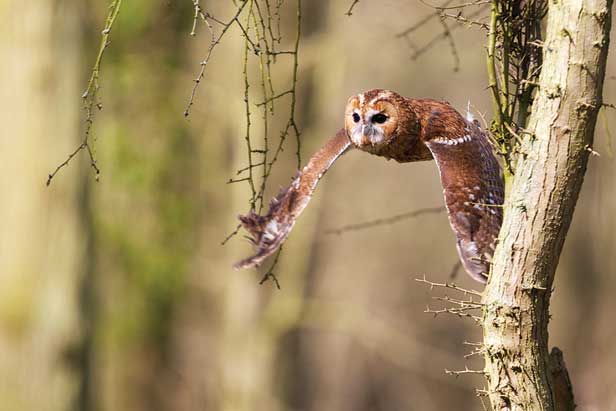Aerial Speed Limit

Birds routinely fly through forests at high speeds without crashing. That may not be news to the avian world, but taking a lesson from birds could help engineers program unmanned aerial vehicles (UAVs) to fly as fast as possible through cluttered environments like forests and urban canyons, says Emilio Frazzoli, associate professor of aeronautics and astronautics. He and colleagues will present their research at the 2012 IEEE Conference on Robotics and Automation in May.
Most UAVs fly at relatively slow speeds, particularly if navigating around obstacles. That’s mainly by design: engineers program a drone to fly just fast enough to be able to stop within view of its sensors. In contrast, birds are thought to gauge the density of trees and speed past obstacles, knowing intuitively that they have a good chance of finding a clear path through forest of a given density.
Frazzoli says that in theory, robots could be programmed to intuit their speed limits in similar fashion. Given general information about the density of an environment’s obstacles, a robot might determine the maximum speed below which it can safely fly.
Frazzoli and PhD student Sertac Karaman developed mathematical models of various forest densities, calculating the top speed that would be safe in each obstacle-filled environment.
First they drew up a differential equation to represent a bird’s position in a given location at a given speed. Then they worked out a model representing a statistical distribution of trees in the forest—similar to those ecologists use to characterize forest density. Such models are thought to be a fair representation of most forests in the world.
The team found that for any specific forest density, there is a critical speed above which there is no “infinite collision-free trajectory.” In other words, the bird is likely to crash. Below this speed, a bird has a good chance of flying without incident. For UAVs, this means that no matter how good they get at sensing and reacting to their environments, they will always need to observe a speed limit to ensure survival.
Keep Reading
Most Popular
Large language models can do jaw-dropping things. But nobody knows exactly why.
And that's a problem. Figuring it out is one of the biggest scientific puzzles of our time and a crucial step towards controlling more powerful future models.
How scientists traced a mysterious covid case back to six toilets
When wastewater surveillance turns into a hunt for a single infected individual, the ethics get tricky.
The problem with plug-in hybrids? Their drivers.
Plug-in hybrids are often sold as a transition to EVs, but new data from Europe shows we’re still underestimating the emissions they produce.
Stay connected
Get the latest updates from
MIT Technology Review
Discover special offers, top stories, upcoming events, and more.